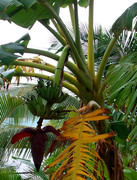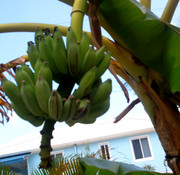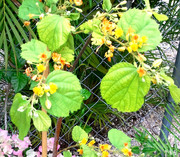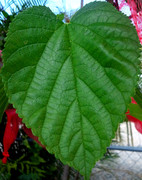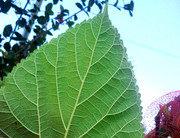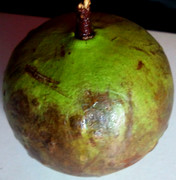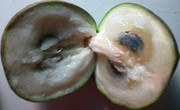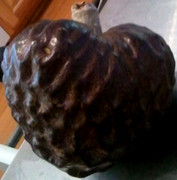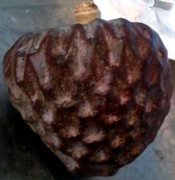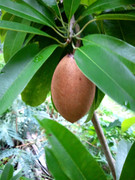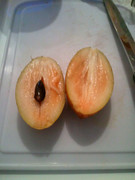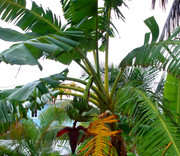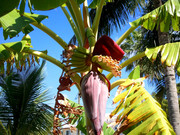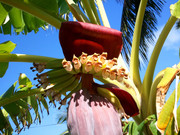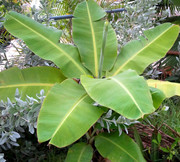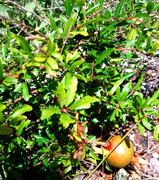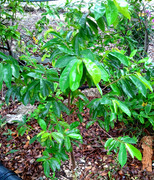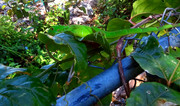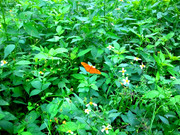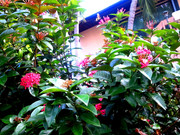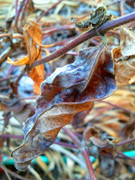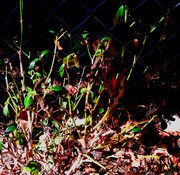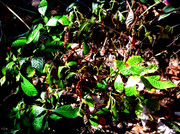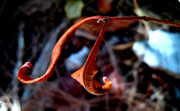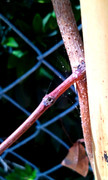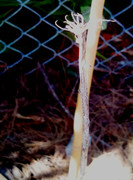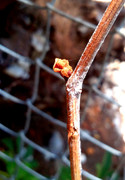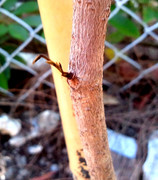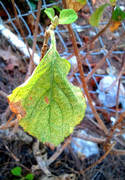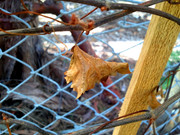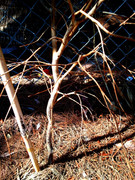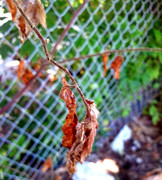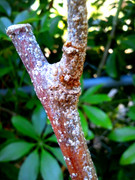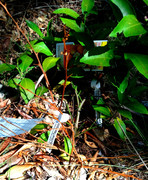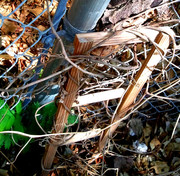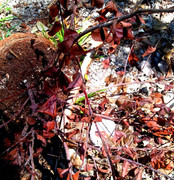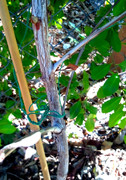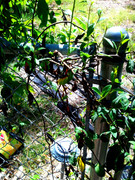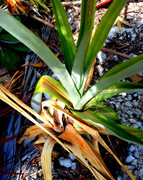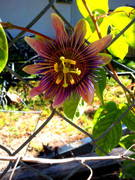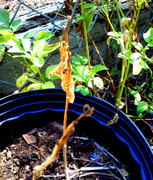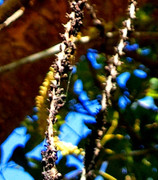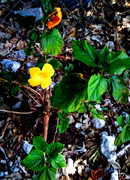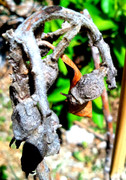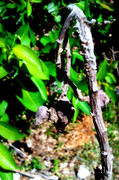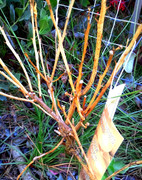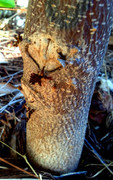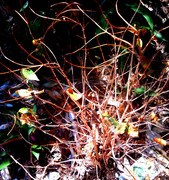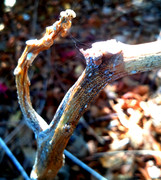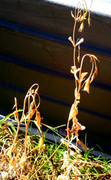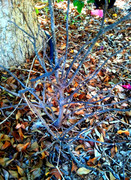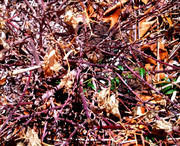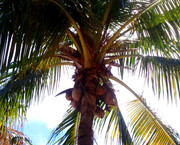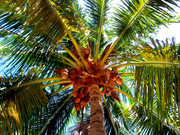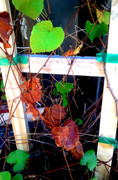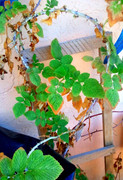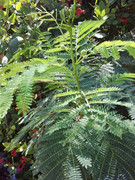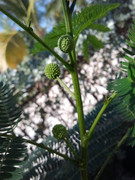51
Tropical Fruit Discussion / What the...? Weirdly precocious sugar apple/Annona squamosa!
« on: April 07, 2016, 03:56:48 PM »
OK, this is very weird. Sugar apples/Annona squamosa do very well here, and in fact were once grown commercially in this area over 100 years ago, so the fact that they are growing from seed here is not that surprising. But the thing is, I threw these (very old and dry) seeds down only about 10 months ago. Frankly, I had so many that I scattered them pretty carelessly, did not bother to really cover them up with soil, threw them in a part of the yard that has mostly terrible soil and only dappled sunlight and is so covered in a neighbor's invasive Australian pine needles (not actually pine so unfortunately no acid benefit) that virtually nothing grows there, and have not watered them almost ever or done a single thing for them. A whole bunch of them grew anyway. This one seed I noticed from the beginning, as shooting up at a more rapid pace and with a stronger growth habit than the others.
Today I took a quick look around the yard - really checking on other new plants which have only recently been put in the ground - after we had an unusual 2 days of heavy rain here during what is normally the dry season. I happened to walk past these sugar apple seedlings, which were so haphazardly thrown that this one bigger one and a few others are growing in the middle of a path, rather than along the border where I try to keep all the plants so they're not a trip hazard and won't get trampled. But this thing seemed happy, so I never moved it. I figured when it gets too big for this small section at the side of the house, I'll transplant it into a permanent location. I noticed that many of the sugar apple seedlings seemed to be sprouting new leaves as a reaction to the rain, so I took a closer look at the largest one to see the leaves. And then I saw... flowers??
I have read that sugar apples can fruit somewhere between 2-4 years old. This thing is only 10 months old, and is only about 1.5ft tall. Note, the other seedlings I planted on exactly the same day are all much smaller, many still about 6 inches tall. For those interested in growing sugar apple (which is supposed to be an easy plant by tropical standards and is capable of fruiting in a container) all of my seedlings that receive the least light have grown the fastest. And now this biggest one, in a deeper shade patch because it's right under a tree, has flowers on it.
Now, I'm not expecting these flowers to actually turn into viable fruit that will hold on (although I will certainly update if they do!), but it strikes me as odd that I have a different sugar apple in another part of the yard that is probably 2.5 years old and is 4ft tall, and even that has no flowers on it. But this tiny thing, at not even 1 year old, is pushing flowers. Wha....? ? ?
I know people on these forums are very big on visual proof, so here you go:
These are some of the other seedlings of the same age, 10 mos, around 6 inches tall because they've been totally neglected - and note, all of these including the flowering one got an attack of spider mite which they thankfully survived thanks to Neem Oil, so they all look a little haggard and could probably use additional nutrition on top of it - and in looking at these photos I think they also got the Noni's whitefly so I'll have to spray them yet again - these are some hardy little plants!
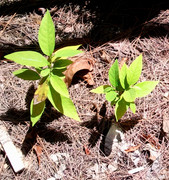
And here's the flowering one at 10 mos:
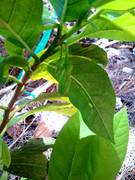
And this is the same plant so you can see perspective, it is about 1.5ft tall (and growing right next to a palm that accidentally seeded itself right next to it at around the same time from a mother palm overhead - I did not really intend for either of these plants to be there, since this is the middle of a pathway):
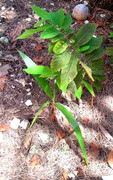
So I don't know if others have experienced this, but it strikes me as very odd that something so tiny would put out flowers, when it is not even big enough to hold a fruit without falling to the ground. I may need to actually start caring for it a little more if it's going to produce fruit faster than any of my other sugar apples - even one that is a good year and a half older than this one is! I just happened to have like a billion seeds from some fruit that I ate and so I tossed them in a part of the yard that I could spare in case any of them happened to come up. Incidentally, the same thing happened with lychee nuts, although they are still about 6 inches tall despite being about 1.5 years old, and no, none of them have put out flowers as yet! But they too were happy enough to grow in this terrible part of the yard with basically no care whatsoever. This one sugar apple seedling, however, appears to be special.
But they too were happy enough to grow in this terrible part of the yard with basically no care whatsoever. This one sugar apple seedling, however, appears to be special.
Today I took a quick look around the yard - really checking on other new plants which have only recently been put in the ground - after we had an unusual 2 days of heavy rain here during what is normally the dry season. I happened to walk past these sugar apple seedlings, which were so haphazardly thrown that this one bigger one and a few others are growing in the middle of a path, rather than along the border where I try to keep all the plants so they're not a trip hazard and won't get trampled. But this thing seemed happy, so I never moved it. I figured when it gets too big for this small section at the side of the house, I'll transplant it into a permanent location. I noticed that many of the sugar apple seedlings seemed to be sprouting new leaves as a reaction to the rain, so I took a closer look at the largest one to see the leaves. And then I saw... flowers??
I have read that sugar apples can fruit somewhere between 2-4 years old. This thing is only 10 months old, and is only about 1.5ft tall. Note, the other seedlings I planted on exactly the same day are all much smaller, many still about 6 inches tall. For those interested in growing sugar apple (which is supposed to be an easy plant by tropical standards and is capable of fruiting in a container) all of my seedlings that receive the least light have grown the fastest. And now this biggest one, in a deeper shade patch because it's right under a tree, has flowers on it.
Now, I'm not expecting these flowers to actually turn into viable fruit that will hold on (although I will certainly update if they do!), but it strikes me as odd that I have a different sugar apple in another part of the yard that is probably 2.5 years old and is 4ft tall, and even that has no flowers on it. But this tiny thing, at not even 1 year old, is pushing flowers. Wha....? ? ?
I know people on these forums are very big on visual proof, so here you go:
These are some of the other seedlings of the same age, 10 mos, around 6 inches tall because they've been totally neglected - and note, all of these including the flowering one got an attack of spider mite which they thankfully survived thanks to Neem Oil, so they all look a little haggard and could probably use additional nutrition on top of it - and in looking at these photos I think they also got the Noni's whitefly so I'll have to spray them yet again - these are some hardy little plants!

And here's the flowering one at 10 mos:

And this is the same plant so you can see perspective, it is about 1.5ft tall (and growing right next to a palm that accidentally seeded itself right next to it at around the same time from a mother palm overhead - I did not really intend for either of these plants to be there, since this is the middle of a pathway):

So I don't know if others have experienced this, but it strikes me as very odd that something so tiny would put out flowers, when it is not even big enough to hold a fruit without falling to the ground. I may need to actually start caring for it a little more if it's going to produce fruit faster than any of my other sugar apples - even one that is a good year and a half older than this one is! I just happened to have like a billion seeds from some fruit that I ate and so I tossed them in a part of the yard that I could spare in case any of them happened to come up. Incidentally, the same thing happened with lychee nuts, although they are still about 6 inches tall despite being about 1.5 years old, and no, none of them have put out flowers as yet!
 But they too were happy enough to grow in this terrible part of the yard with basically no care whatsoever. This one sugar apple seedling, however, appears to be special.
But they too were happy enough to grow in this terrible part of the yard with basically no care whatsoever. This one sugar apple seedling, however, appears to be special.


